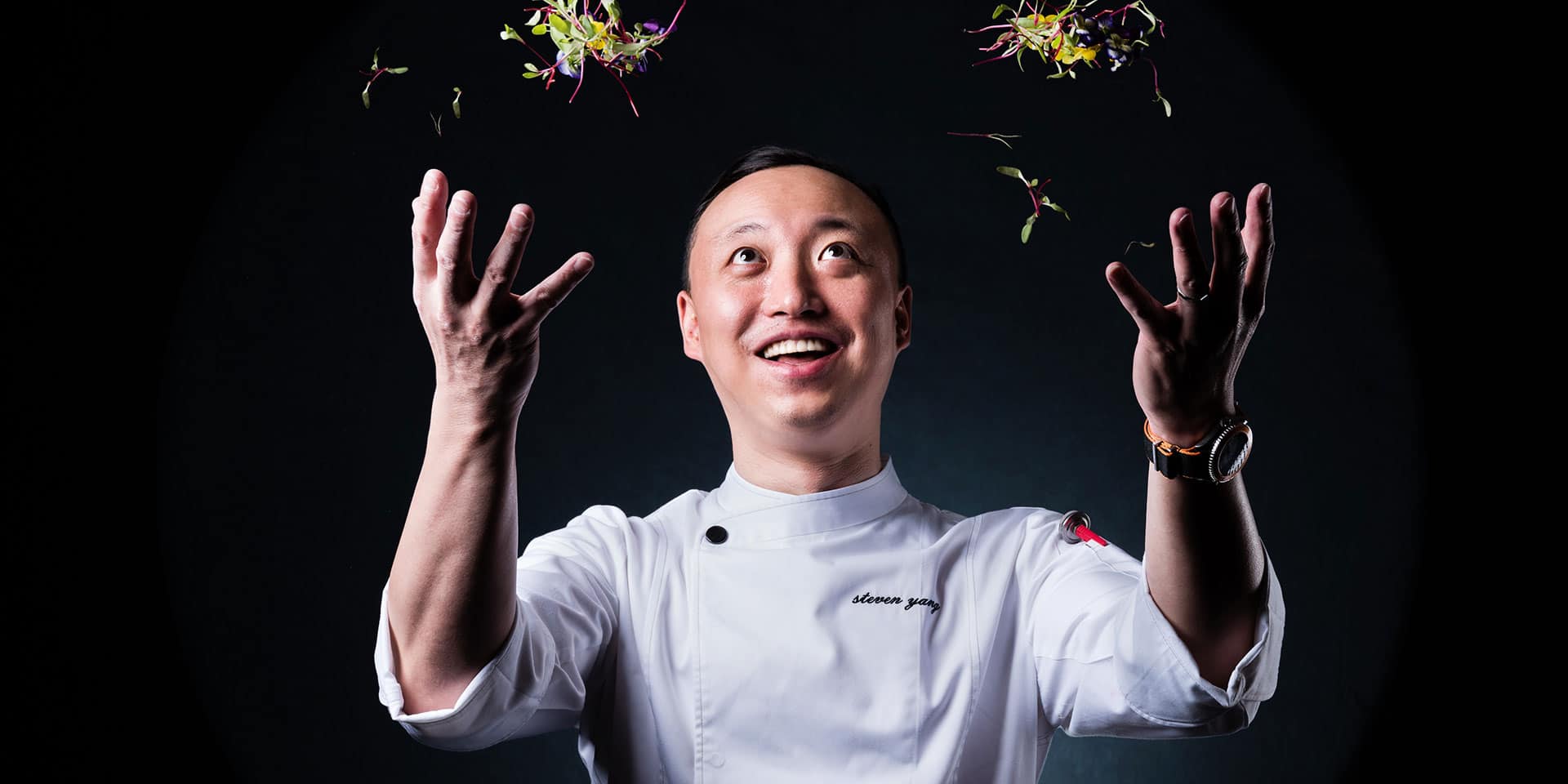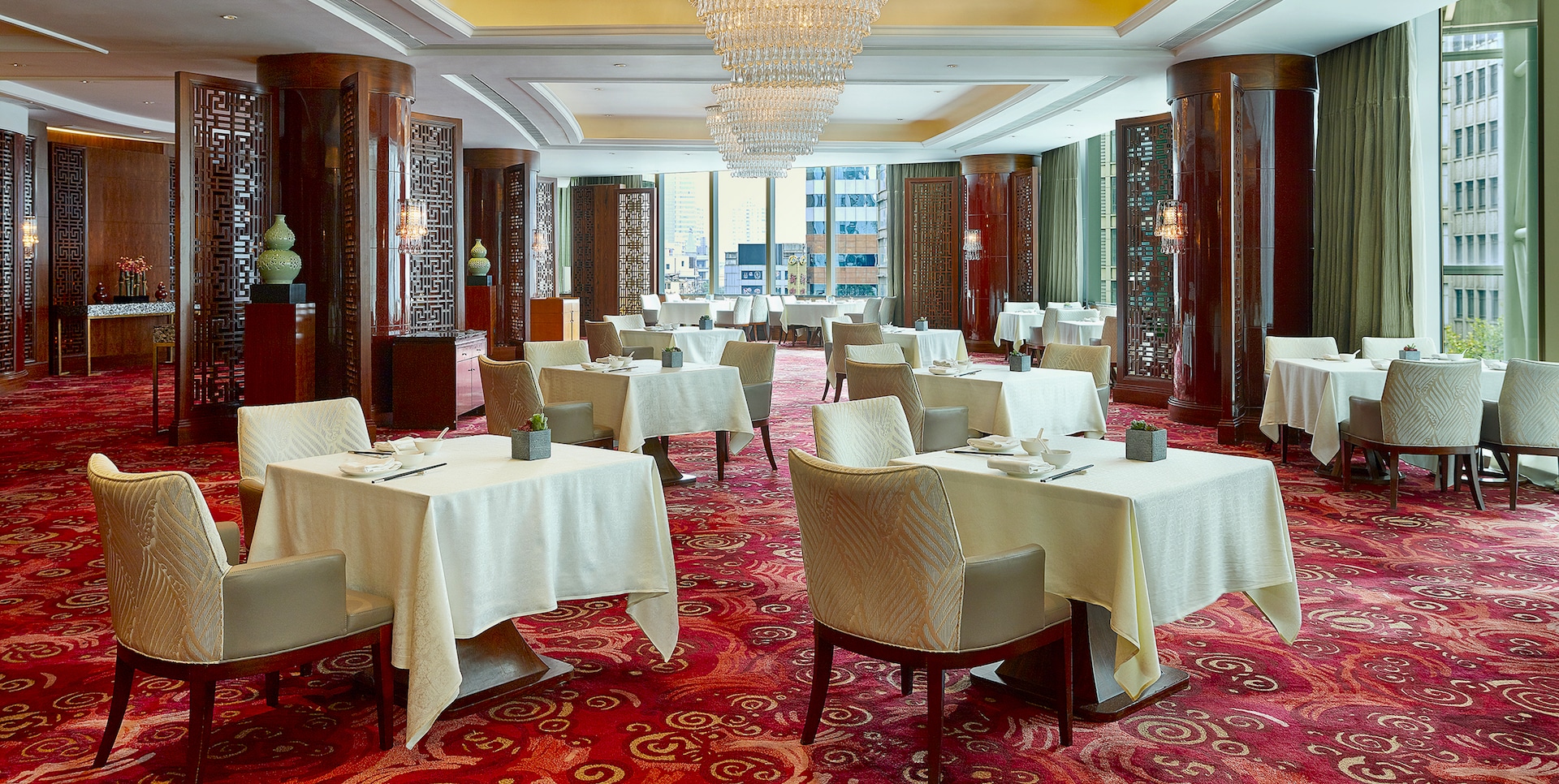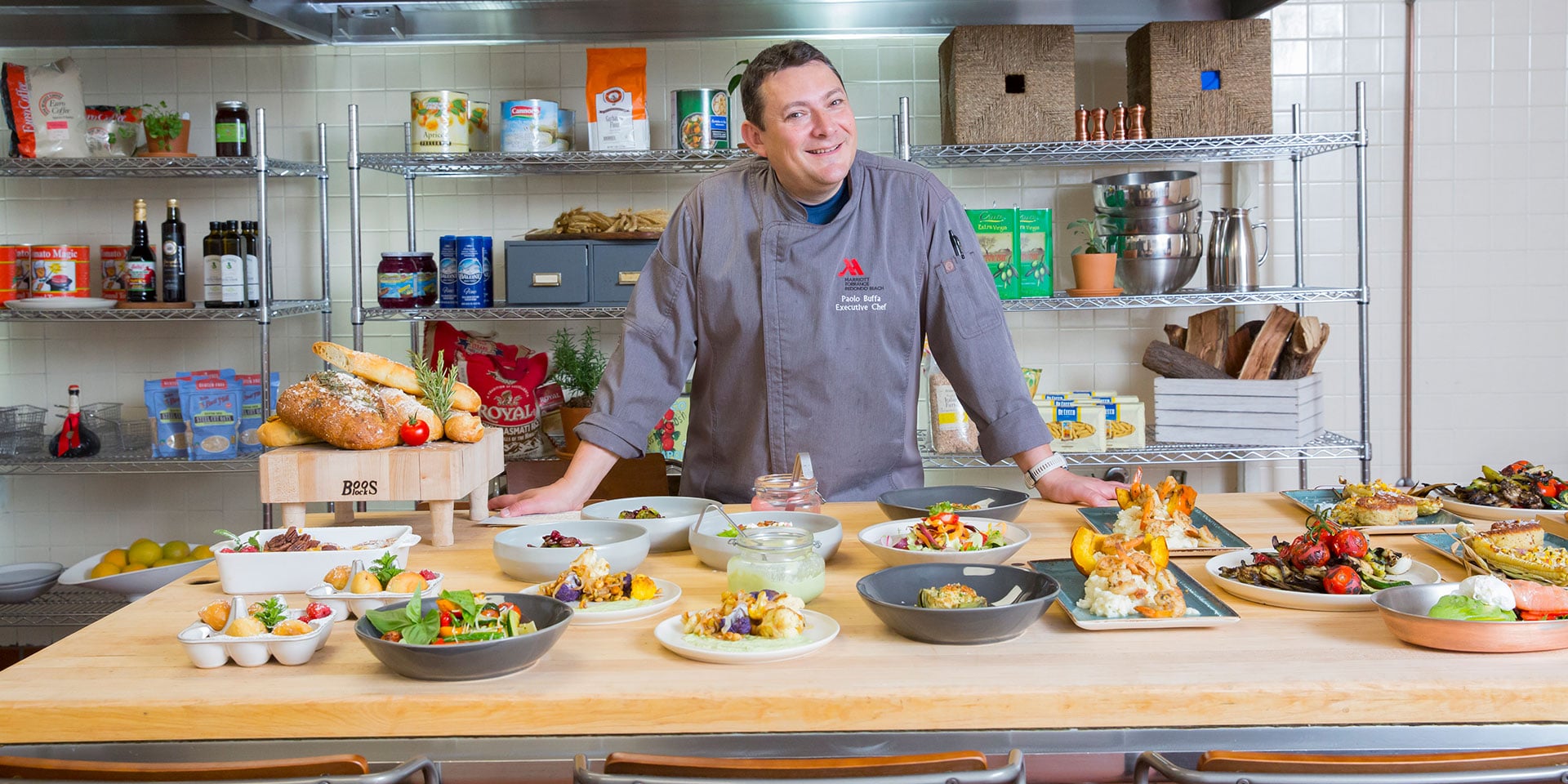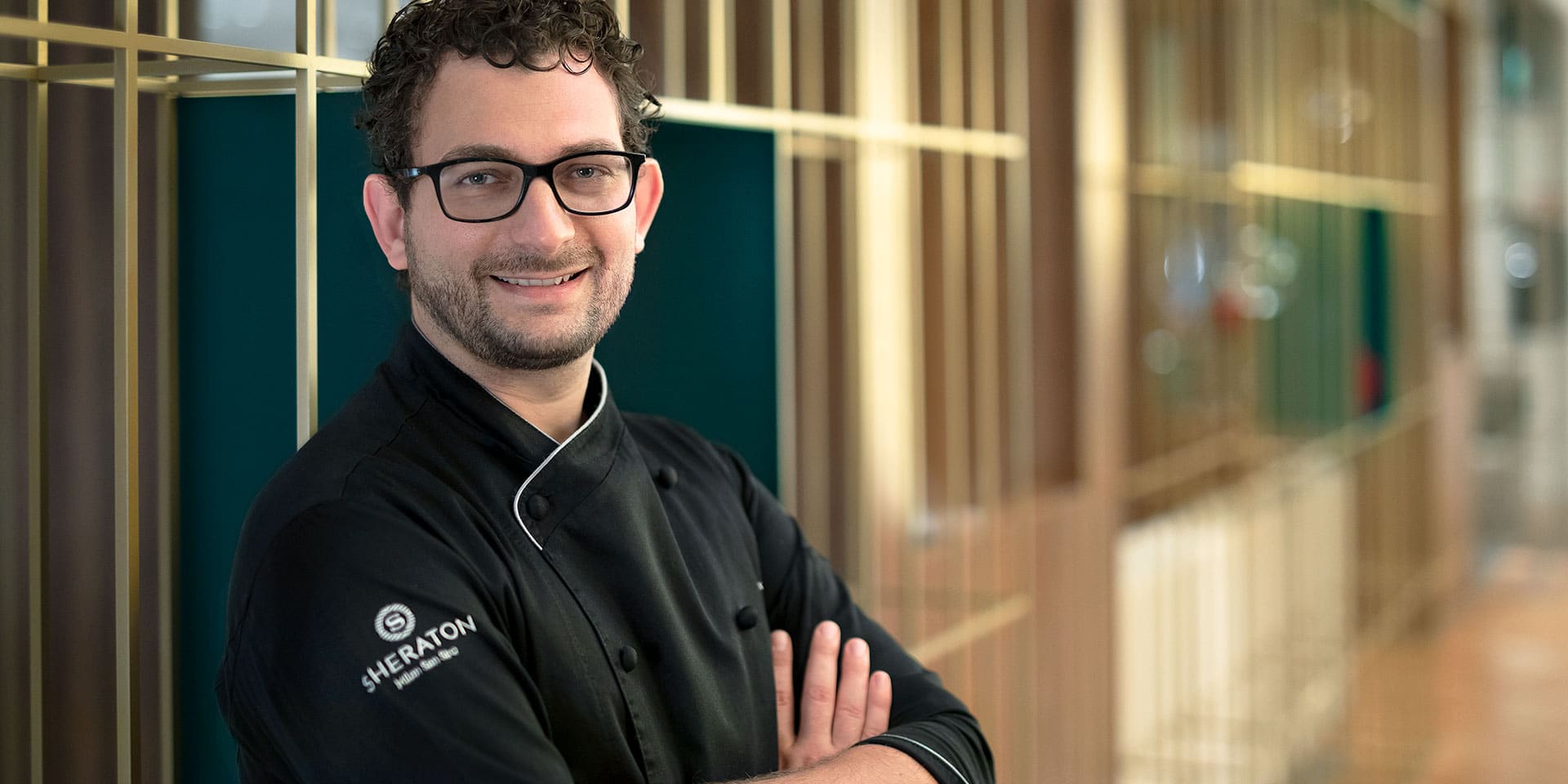
Chef Steven Yang joined the team at Shanghai Marriott Hotel City Centre’s Man Ho restaurant. (Photo: Courtesy of Man Ho)
Chefs You Should KnowMan Ho’s Chef Steven Yang on Shanghainese Cuisine and How He’s Making It Michelin-Worthy
By Lauren HoganIt’s been less than a year since Chef Steven Yang joined the team at Shanghai Marriott Hotel City Centre‘s Man Ho restaurant, but his reputation for delivering local cuisine with remarkable flavors has been around far longer than that.
The Shanghainese chef discovered his passion for cooking under his mother’s guidance, learning how to create local dishes defined by the three elements of Chinese cuisine: color, aroma and taste. His love of cooking led him to work both abroad and locally, and Yang credits Marriott for his first major break in the industry.
At his most recent stint at another Marriott property in Shanghai, he served as executive chef of three restaurants. But a desire to focus his skills on just one restaurant led to his current role at Man Ho, where he is able to elevate his hometown cuisine to a more luxurious level.
The majority of Man Ho’s patrons are also Shanghai residents; it’s clear Chef Yang is doing Shanghainese cooking not only right, but very well, too.
With Chef Yang’s aim for a Michelin star by next year, it’s worth testing out the local waters at Man Ho ahead of the crowds to come.
Your current role allows you to delve into Shanghinese-style dishes. What inspires you?
Traditional [local] food uses river fish, shrimp and pork. But now a lot of young people change their tastes [to be healthier] … so we need to change a lot of items. Some of the beef, the seafood, we modify, but we still keep the traditional taste. In order to make the dishes healthier, I cut down [the sugar and oil] in the dishes and try to use more organic ingredients.
For example, the salad of organic tomato, avocado and osmanthus [syrup] has too much sweet flavor due to the osmanthus, so I add organic tomato and avocado to [give the dish] a fresh taste. Also, the slow-cooked beef rib in Chinese barbecue sauce is simply slowly boiled, rather than deep fried or stirred. This is done before adding other seasoning to keep the protein together.
Typical Shanghainese food tends to be a bit sweeter, correct?
Yes, not very sweet, but a little bit sweeter. Soya sauce is very important for Shanghainese food, as is which brand of soya sauce [you use], as well as how long it takes to make and for how long it has aged. This is also very important. The taste is very different for different brands. It’s like wine … if it’s kept for a long time, the taste is very strong; if kept for a short time, the taste is not so good.
What’s your favorite style of Chinese cuisine?
Shanghainese and, sometimes, Cantonese. The cooking method between Shanghainese and Cantonese differ in that Shanghainese food is usually cooked by simmering and stewing [the food], while Cantonese style food uses the method of steaming and stirring. Cantonese cuisine also usually uses more oil and sugar than Shanghainese food.
The first kitchen I worked in was under a Hong Kong chef, so I learned a lot about Cantonese food. I’m Shanghainese though, so it’s familiar for me. I was always more interested in learning my mom’s cooking [than going to school].

And Man Ho also serves Cantonese dishes?
About 80 percent [of the menu] is Shanghainese; 20 percent is Cantonese. We do a dim sum brunch that’s a la carte. We also had an all-you-can-eat dim sum brunch previously; it was very popular.
Chinese food is very interesting. You see the name shaomai, but depending on the region it looks very different and tastes very different. The name is the same, but the cuisine is very different.
What dim sum would you recommend guests try?
For me, it’s the xiaolongbao [soup dumpling]. It’s Shanghainese and 100 percent worth trying. Another is siu mai, which is Cantonese. [At Man Ho] we use abalone and conpoy with it, which is very nice. There is also a local type of siu mai [shaomai in Mandarin] made with sticky rice. The Cantonese style is made with dough and has pork stuffed inside. The local one uses sticky rice with just a little bit of pork, and the outside looks like cabbage.
Chinese food is very interesting. You see the name shaomai, but [depending on the region] it looks very different and tastes very different. The name is the same, but the cuisine is very different.
Another [dish] I really like is the sweet and sour pork. In Cantonese it uses a tomato sauce, and the color is red. In Shanghainese cuisine, it uses soya sauce, vinegar and sugar, and that’s it. Both are sour and sweet, but the tastes are different.
What are some of your other favorite signature dishes at Man Ho?
Roasted eel with honey wasabi sauce, poached sliced Wagyu beef in sweet soya sauce, and kurobuta pork rib with sour plum in sweet and sour sauce.
Shanghai’s dining scene is vast. How do you make sure Man Ho stands out for those seeking local cuisine?
The dishes here aren’t found elsewhere. One example is our tiger prawn [with steamed egg white with Hua Diao wine sauce]. It’s about [1 pound] per piece. Outside our restaurant, you wouldn’t find it [prepared] like this. The value here is very good — and the taste. I change some of the traditional Shanghainese dishes to be fashionable in presentation, but the taste, I keep it traditional.







